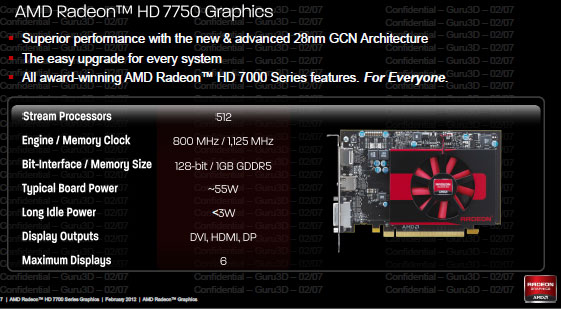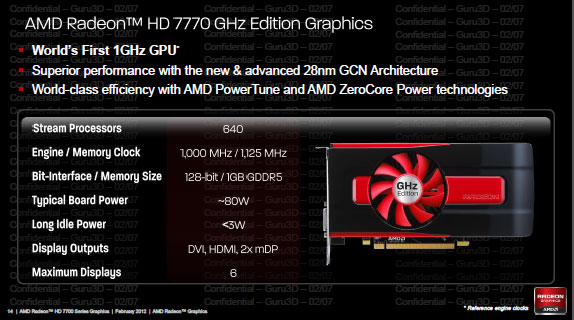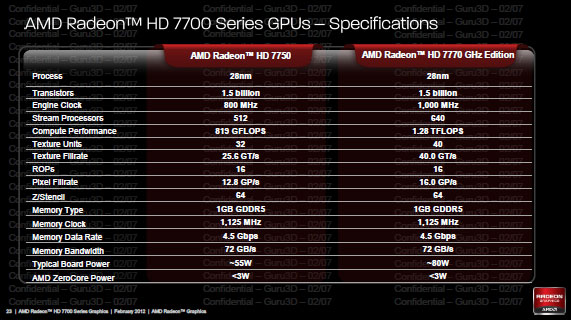Specs and Southern Islands
Specs and Southern Islands
Southern Islands
You've been hearing about several codenames and that can be a little confusing. It's simple really, in the market we have entry level, mainstream and high-end products. When you notice "Cape Verde" that's entry level Radeon HD 7700.
Pitcairn will be the codename the mainstream products will hide (R7800) under, and finally Tahiti is the codename for the most high-end products.
- Entry level = Cape Verde = Radeon HD 7700 series
- Mainstream level = Pitcairn = Radeon HD 7800 series
- High-end level = Tahiti = Radeon HD 7900 series
The entire segment from top to bottom will be released in Q1 2012. The Series 7900 have been launched, now it's time for entry-level, the Radeon HD 7700 series.
Technology
It is important to understand that there are significant changes in this Family of GPUs. The GPU architecture was overhauled, AMD moved towards a 28nm process technology, the new cards are all PCIe gen 3 compatible and there have been significant changes on power consumption. We'll address all the features separately of course.
With the launch of the Radeon HD 7000 series Eyefinity has been updated towards version 2.0 DDM audio is now fully supported (you hear audio on the actual monitor it's played of), a new 5x1 landscape mode is introduced, and you may now create custom multi-monitor resolutions.
Radeon HD series 7700
We start of with the GPU overview (architecture we'll discuss later). AMD now bakes GPU's on the all new 28nm node, in very simple wording that means they can put more transistors on a smaller area.
The Cape Verde core has a good 1.5 Billion transistors, the internal architecture has changed, we'll talk a little deeper about that in a minute. But as a result:
- The Radeon HD 7750 is packed with 512 shader processors harbored in Compute Units segments (8 of them).
- The Radeon HD 7770 is packed with 640 shader processors harbored in Compute Units segments (10 of them).

Memory wise both cards will pack 1 Gigabyte of DDR5 memory, quite a bit for entry level products. The memory bus is 128-bit, but combined with the gDDR5 memory (which is quad data rate) you do get a decent chunk of much needed memory bandwidth, which the GPU certainly can use. The memory clock will be 1125 MHz, being quad data-rate (gDDR5) that results into an effective data rate of 4500 MHz or 4.5 GBPs. This will give the Cape Verde GPUs 72 GB/sec of framebuffer bandwidth to do its thing in.

The Cape Verde GPU packs 1.5 billion transistors, but if you can't apply a fast enough clock frequency it would become a problem. Well, that's not an issue for AMD either, the R7750 is clocked at 800 MHz while the Radeon HD 7770 will get a reference core clock frequency at a full GHz.

